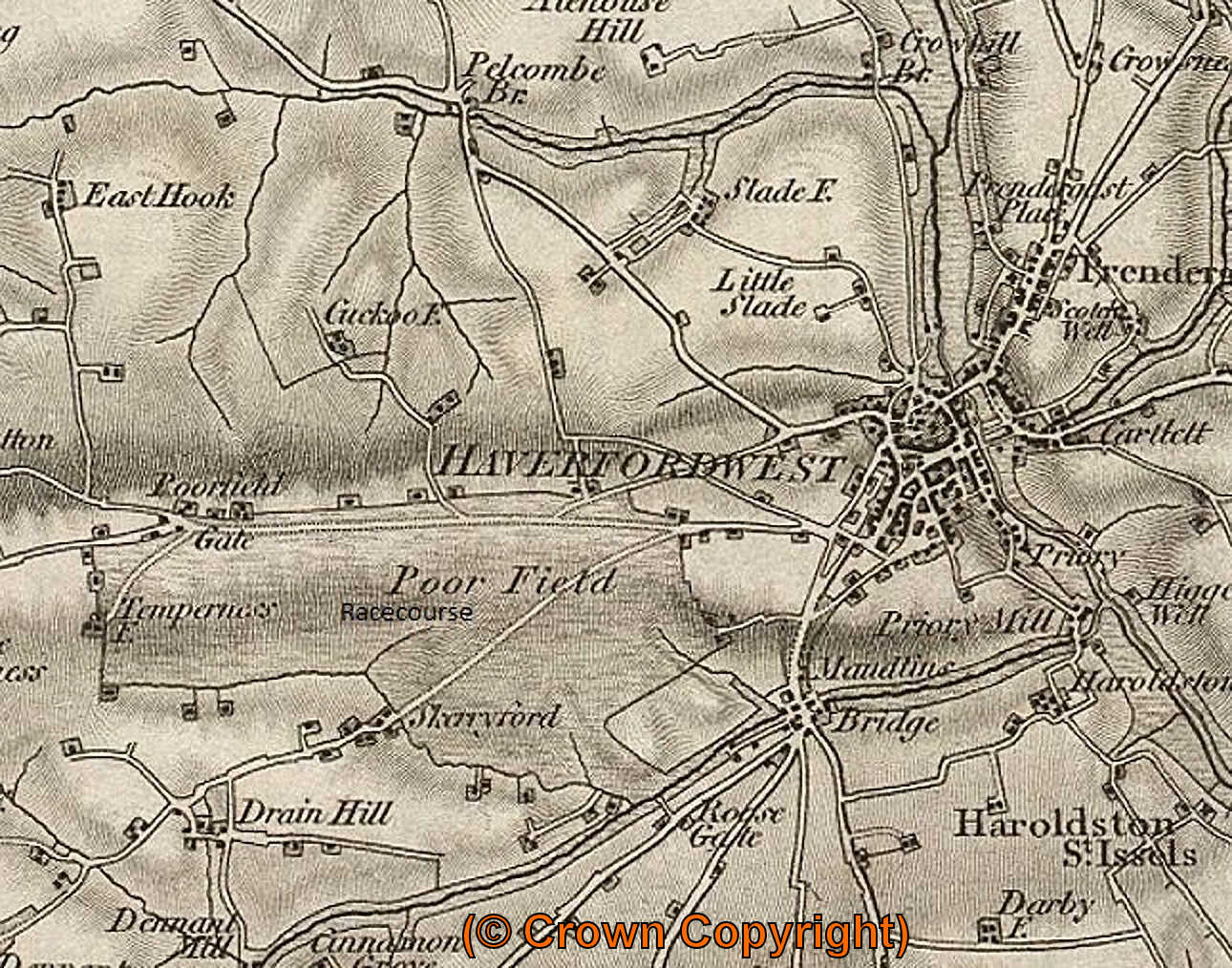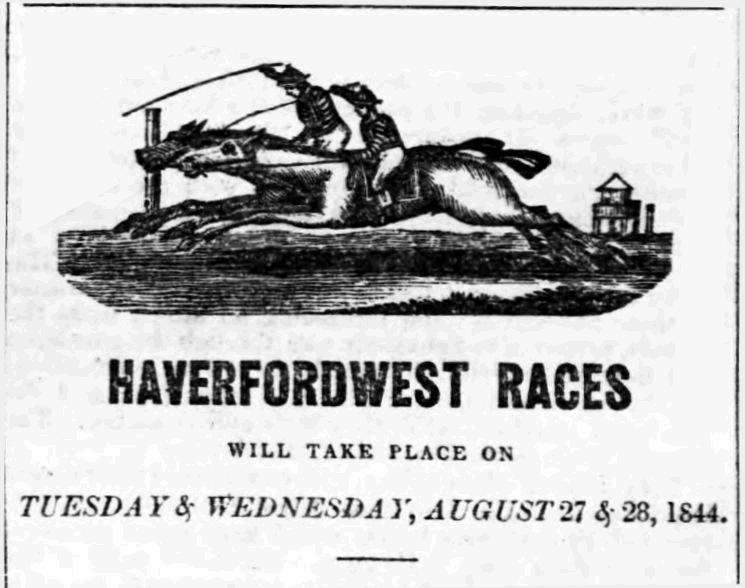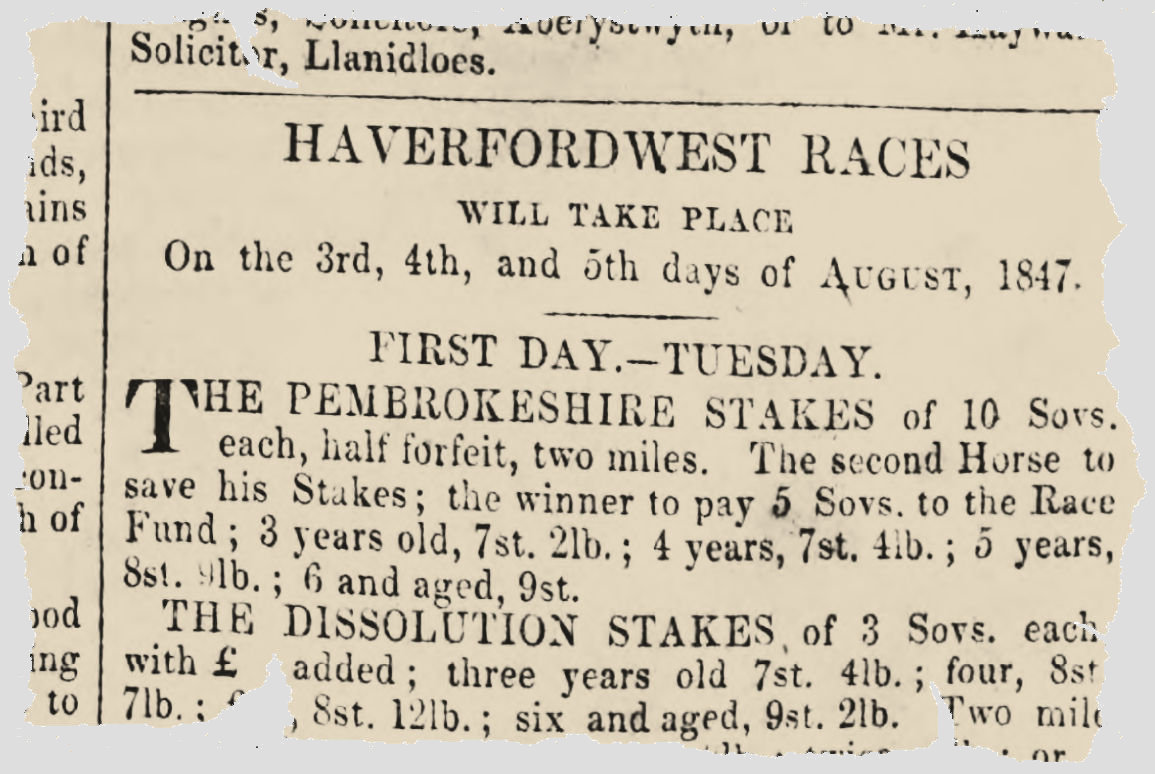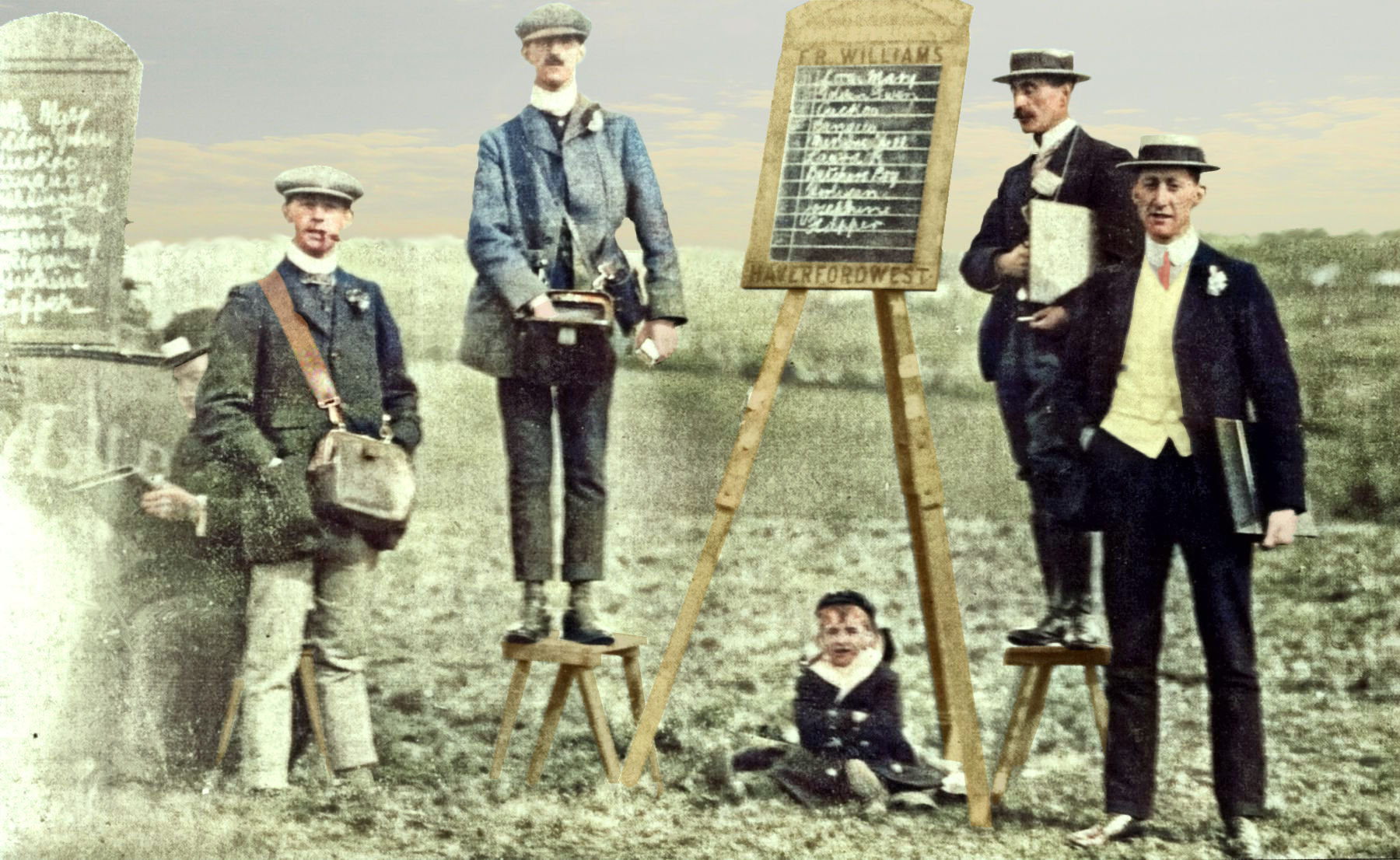Although horse-racing in various forms had been present in Britain from time immemorial formal races with a defined course came into being during the Georgian period with the backing of the gentry and aristocracy. By the mid 18th century the Jockey Club had been formed and Newmarket rules created to control the sport.

Horse racing in Wales followed a similar pattern to that in the rest of the country and developed primarily as a pursuit of the gentry initially with organised point-to-point meetings. It is believed the first racecourse in Haverfordwest was established at Portfield around 1727 (nearly 300 years ago) with racing taking place at that time but it was 1768 before races were recorded. The original course covered a very large area extending from what is now the Belle Vue running west as far as Portfield Gate and south as far as Merlin’s Bridge but by 1829 racing took place on a purpose built course which is the racecourse we know today. You can get an idea of the layout of original racecourse here;
Horse racing had been the principal spectator sport in the Britain for generations until it was superseded by Association Football (Soccer) in the late 19th century and by 1833 there were internationally recognised flat races at many locations around Wales including Aberystwyth, Brecon, Conwy, Cowbridge, Haverfordwest and Wrexham.
As well as a sporting fixture race meetings were important social events and attended by the local gentry as well as common people and at the bottom of race notices the phrase ‘Ordinaries and balls as usual’ referred to the gatherings attended by the well-heeled where ‘ordinaries’ were lavish dinners laid on for those who could afford them; the accompanying balls were popular events held in the Assembly Rooms (at the junction of St Mary Street and Tower Hill) and would often last into the early hours. The local gentry attending these events often travelled to them in sedan chairs!
Throughout the 19th century interest in racing at Haverfordwest waxed and waned fading in popularity for 
a few years before a resurgence in interest brought the crowds back. The attached advertisement from The Welshman for races to be held in August 1847 gives an indication of the importance of the event. Races were often well attended and the prize money drew riders and horses from all over the country, today the value of the prizes on offer in 1847 adjusted for inflation would range between £2,000 and £6,000 . In addition to outlining the classes and rules for the various races it is interesting to note the intention of the organisers to destroy any dogs found on the racecourse though whether or not this included dogs accompanying and under control of their owners is not made clear; I suspect it referred to straying dogs. Horse racing events were also a popular venue for confidence tricksters keen to take advantage of the gullible. One of the popular swindles of the time (and still popular) was called thimble-rig which is better know today as the “Three Card Trick” or “Find the Lady”. Horse racing in Haverfordwest ended not with a bang but with a whimper. The last official race meeting took place in 1901 and although well attended it seems local people were unwilling to pay for the privilege with the open nature of the site allowing many people to watch for free. In March 1902 the Hunt Race Committee decided to postpone races until a course could be found where admission could be charged, a suitable course was never found and racing has never resumed.


